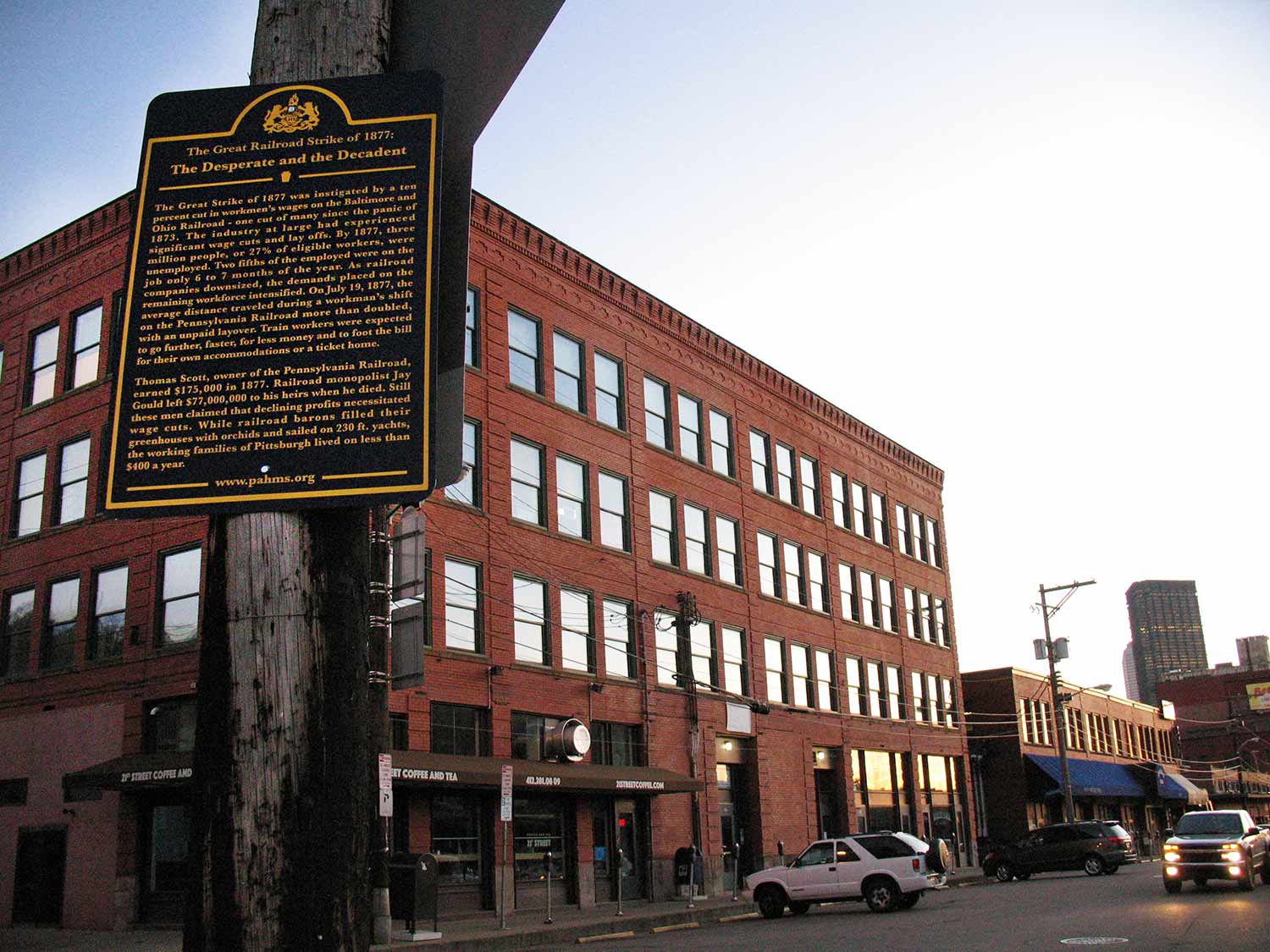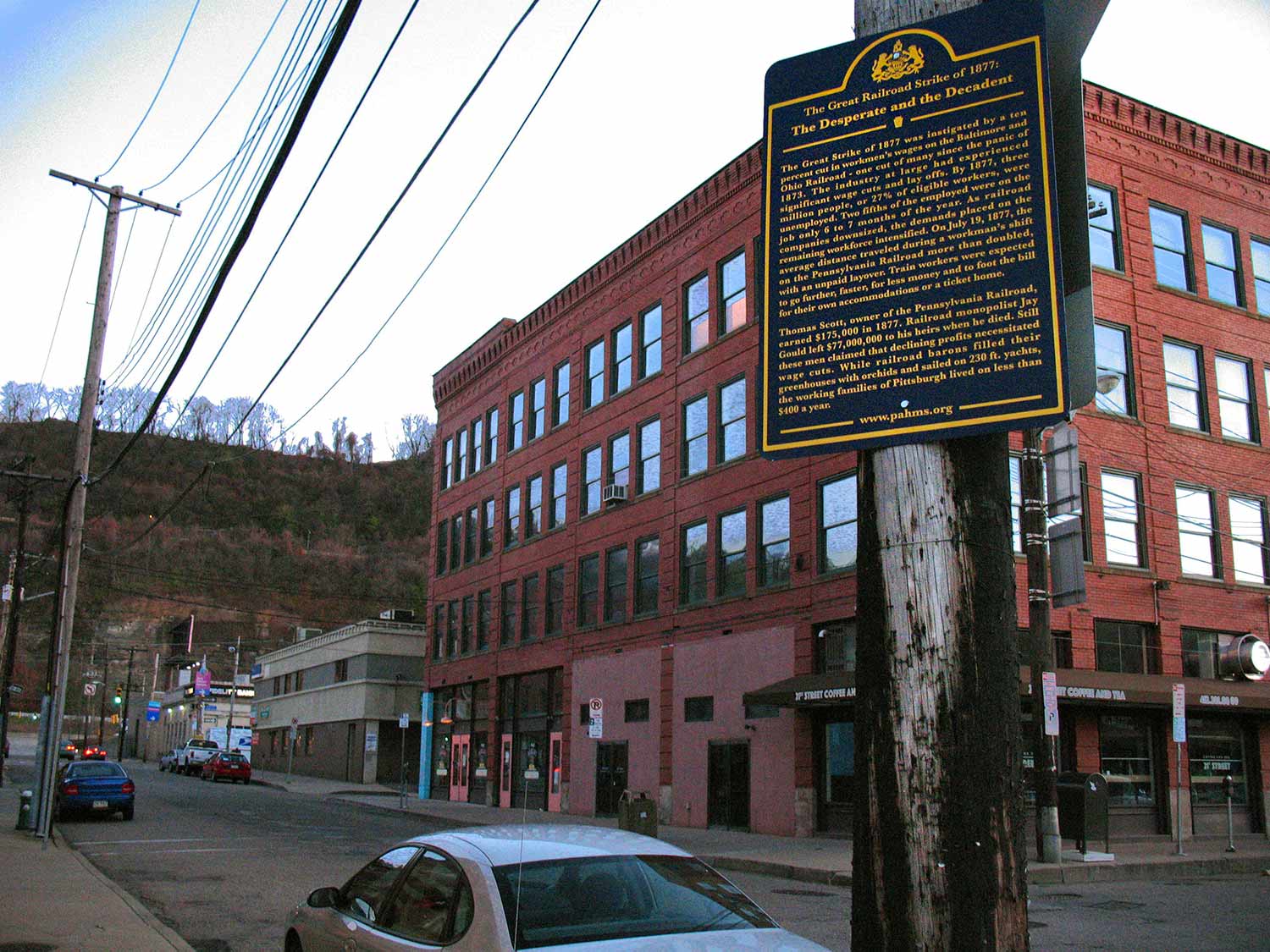

The Desperate and the Decadent
![]()
The Great Strike of 1877 was instigated by a ten percent cut in workmen’s wages on the Baltimore and Ohio Railroad—one cut of many since the panic of 1873. The industry at large had experienced significant wage cuts and lay offs. By 1877, three million people, or 27% of eligible workers, were unemployed. Two fifths of the employed were on the job only 6 to 7 months of the year. As railroad companies downsized, the demands placed on the remaining workforce intensified. On July 19 1877, the average distance traveled during a workman’s shift on the Pennsylvania Railroad more than doubled, with an unpaid layover. Train workers were expected to go further, faster, for less money and to foot the bill for their own accommodations or a ticket home.
Thomas Scott, owner of the Pennsylvania Railroad, earned $175,000 in 1877. Railroad monopolist Jay Gould left $77,000,000 to his heirs when he died. Still these men claimed that declining profits necessitated wage cuts. While railroad barons filled their greenhouses with orchids and sailed on 230 ft. yachts, the working families of Pittsburgh lived on less than $400 a year.
![]()

Location
21st and Smallman Street, Strip District: 40.45236, -79.98386
Current State
This historical marker was removed by unknown actors in 2017-18.


